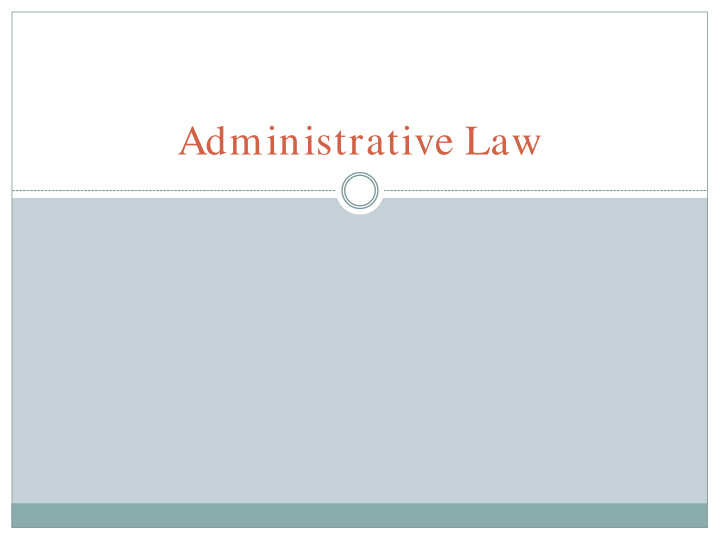



Administrative Law
Branches of Government Legislative (Congress) – creates law Judicial (Courts) – interprets law Executive (President) – enforces law
Administrative Agencies Organizational Chart of the U.S. Government
Agency Powers Legislative function: Rule making Executive function: enforcement Judicial function: Adjudication
Agency Authority No Agency can exist without Congressional Authority Each Agency has an “Enabling Statute” This legislation defines the scope of the agency’s mission and “enables” it to perform functions. See example handout
Authority Statute 15 USC sec. 610 2 gives the Federal Trade Commission the authority to prescribe rules prohibiting deceptive telemarketing practices. • While Congress allows the FCC broad range in proscribing rules, note sec. (a)(3)(A)-(C) requires the FCC to include specific items in its rules.
16 CFR 310 .4 (1-1-20 12) Rule Making (regulations) Rule enacted by the FTC to address charge from Congress to regulate abusive telemarketing.
Regulations are usually more specific than the authority statute. Important to read both the regulations AND the authority statute. If an agency’s regulation exceeds the authority of the statute, that regulation is invalid.
How are rules made? Administrative Procedures Act 5 USC 500 et seq. Law that governs how administrative agencies may propose and establish regulations. Applies to both executive departments and independent agencies.
Attorney General's Manual on the Adm inistrative Procedure Act (1947), basic purposes of the APA are: to require agencies to keep the public inform ed of their organization, procedures and rules to provide for public participation in the rulem aking process to establish uniform standards for the conduct of form al rulem aking and adjudication to define the scope of judicial review
Code of Federal Regulations: annual codification of rules published in the Federal Register. It is divided into 50 titles that represent broad subject areas. Updated on a staggered basis once each calendar year. E-CFR is the unofficial compilation of CFR and Federal Register amendments.
Federal Register Published every government business day. Contains “proposed” rules Calls for public comment on those proposed rules. After receiving comments, the rule may be revised and re- published. The cycle of notice-comment may happen many times before a final regulation is published in the Federal Register. No regulation can become effective until the final form is published in the Federal Register “Final Rule” notice may indicate a later effective date.
Recommend
More recommend